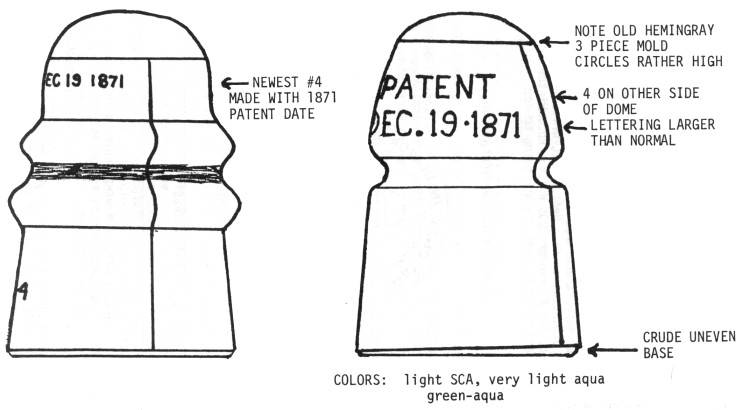CD 124 Information From Colorado
by Mike Bliss
Reprinted from "INSULATORS - Crown Jewels of the Wire", April 1977, page 4
Have been doing some local investigation of a particular insulator and
thought it valuable enough to share with the rest of the world. I kinda put two
and two together to end up with a relatively true to fact story.
Denver was the third in the nation to have a central office; meaning, of
course, that all the wires went to the office, and you were connected to another
pair of wires, by the operator, to the desired number you wished. Previous to
this you had to physically string a pair of wires between your phone and that of
the doctor, grocer, or whoever you wanted service to.
On Monday, February 4, 1879, the Denver central office opened its doors for
business for the first time. Earlier, the Transcontinental Telegraph line strung
a branch to Denver through Julesburg on October 10, 1863, so we already had
outside telegraph. The central office was located at this time between 15th and
16th streets on Larimer (downtown Denver).
Then the need was growing greatly for the major cities to get the telephone
service also. Central City's boom was still going. Georgetown was a prosperous
town, along with Golden and Idaho Springs; so they engineered the first
long-distance line in Colorado between all of these towns, since they were
geographically in a relatively straight line.
The line, obviously, was at least being planned, if not already started to be
built, at the same time the central office was completed, because the line was
finished in March of 1879. It was built first to Golden, heading straight west
out of Denver, up Clear Creek to Central City, then through Russel Gulch and
turning south over to Idaho Springs. When the line got to Idaho Springs it went
west again to Empire, then on over to Georgetown.

The 1871 #4 in its crudest style (out of the four styles)
is beyond a doubt the insulator they used.
This past summer bottle diggers (myself one) unearthed several pieces of
these about three blocks from the early location of the central office. None of
these were perfect, only one being whole. The dig was held with the clearing of
a very early Denver dump along Cherry Creek, and was believed a dump to fortify
the creek's banks.
There was a line torn down by Golden by an old lineman (now 83) who
distinctly remembered the piece and was able to pick it out of a group of
different ponys. A line between Georgetown and Idaho Springs had been taken over
by the local power company and re-used as a talk circuit for the trouble
shooters servicing the area. This insulator was taken off of this line only five
years ago. Just last spring a bunch of re-used insulators, from an old line in
the area, was located between Russel Gulch and Idaho Springs, and an old #4 was
pulled down by a jubilant lineman who knew what he had found.
The insulator is a historical one for Colorado, as we found that it made
history in the early advancements. The insulator, to my knowledge, has never
been found on any other lines in Colorado. At any rate I know that it is by far
the earliest of the four #4 styles made, and most assuredly the rarest. To date
I know of only about ten recovered from this area; and I'd really like to hear
if there are other locations where these have been uncovered. There is only one
in the light S.C.A., and I would like to find out about its origin (I'd love to
own it, too!).
Hope that I have shown some light on this weird CD 124. As of about three or
four years ago, Mr. Milholland had never been able to see one, and I'm eager to
see if it snuck into his 4th Revision.
| 